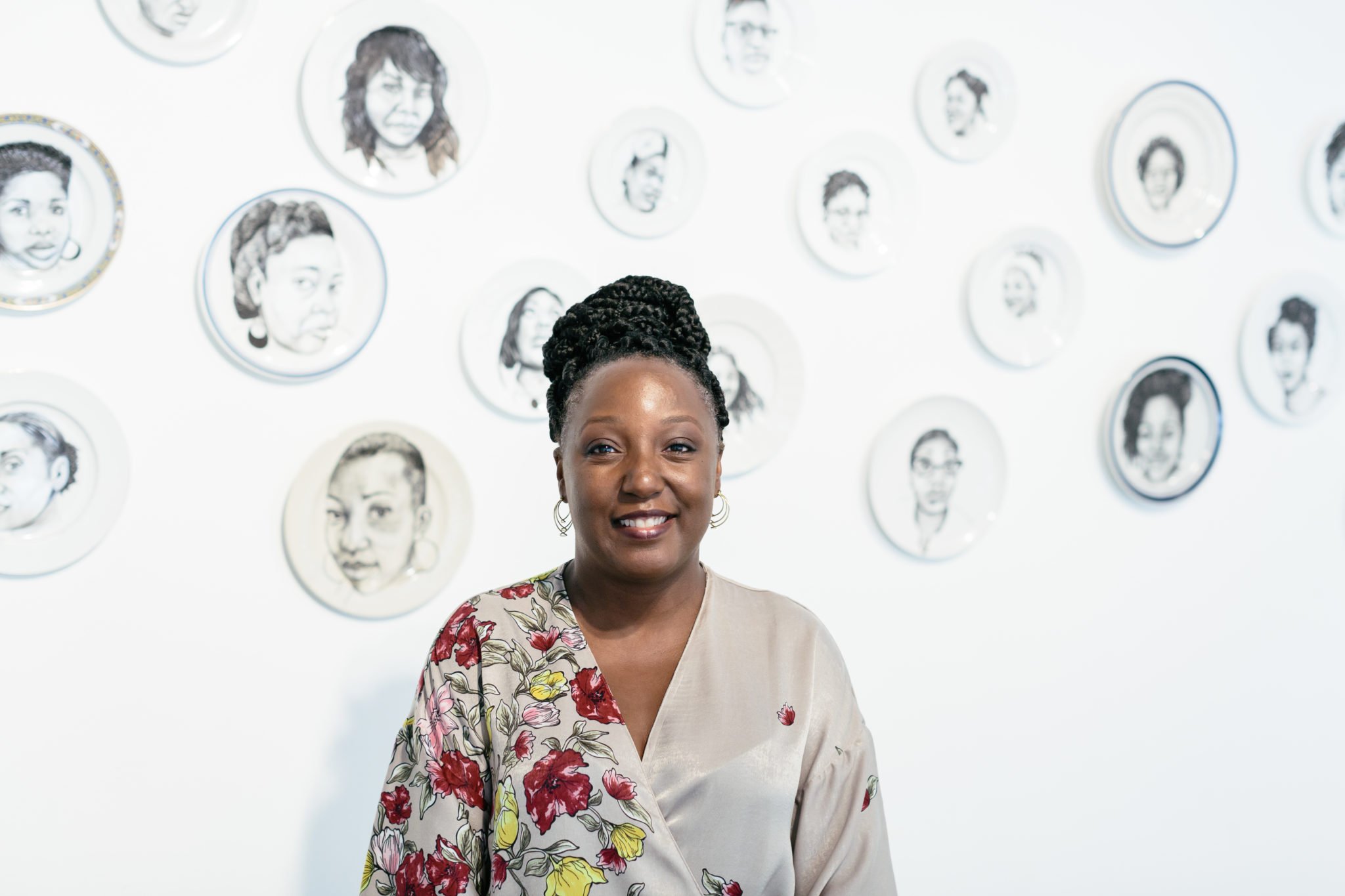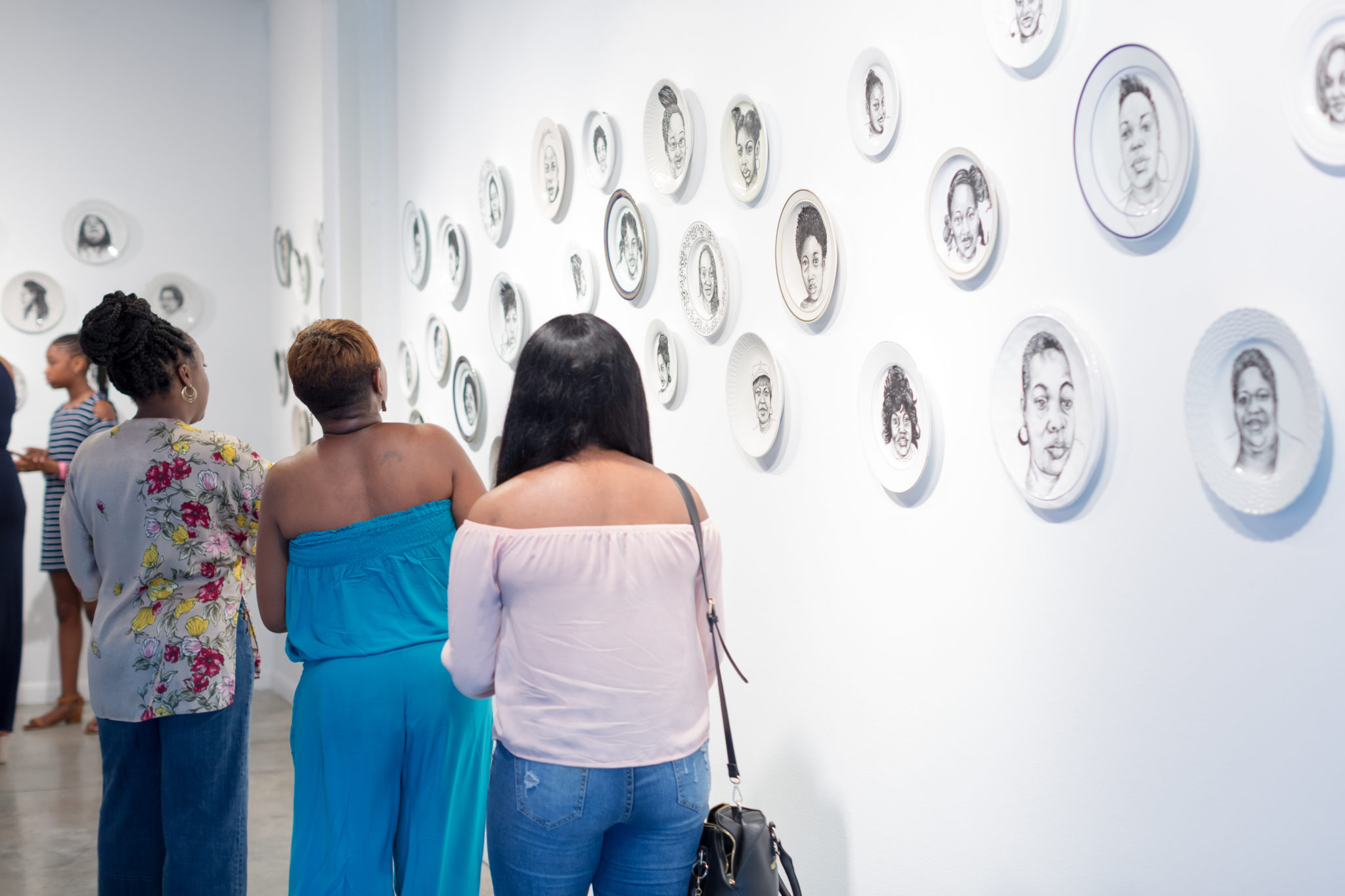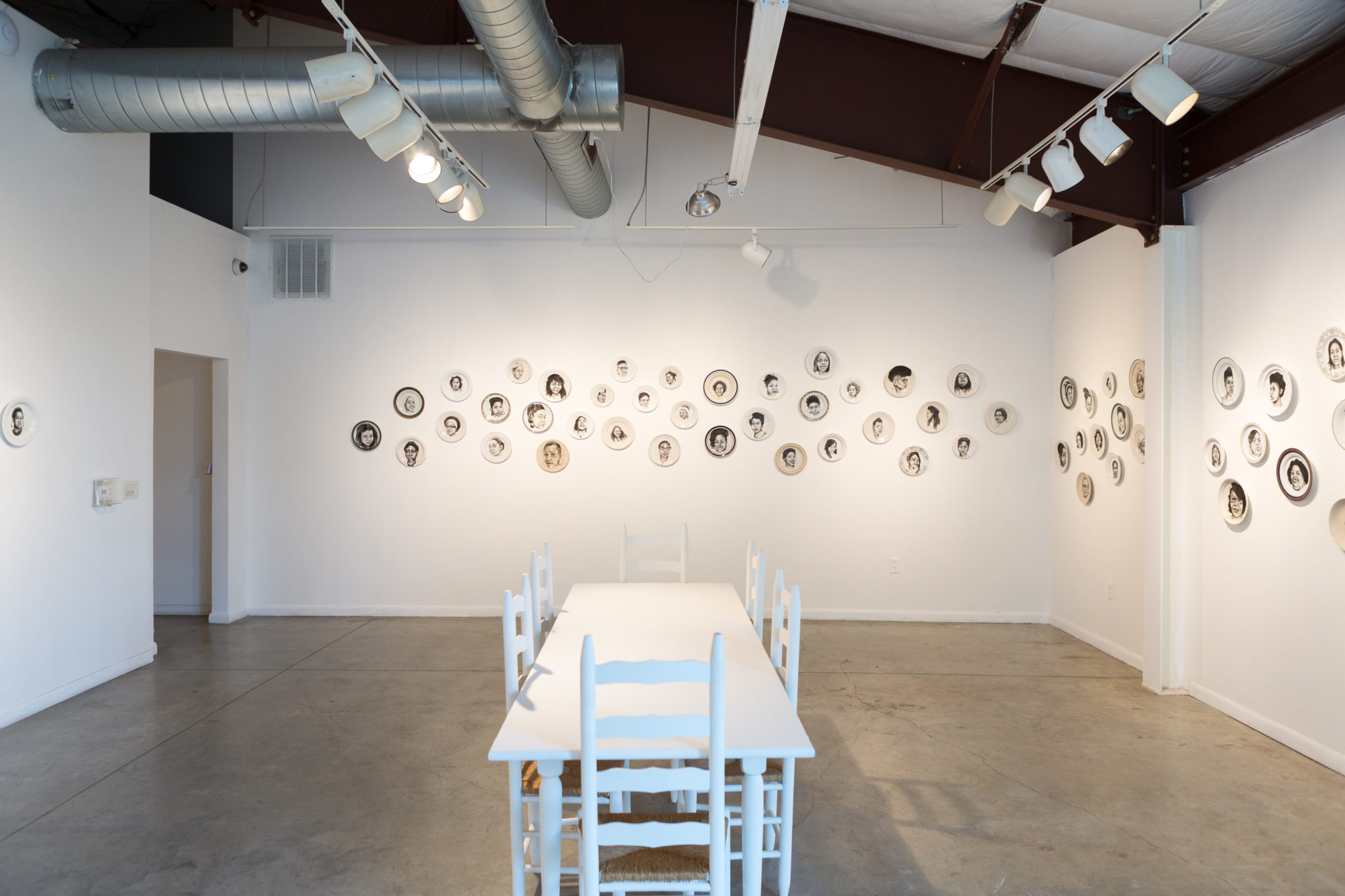
Houston Artist Delita Martin Gives Black Women a Seat at the Table in New Exhibit
The 300 women whose portraits are drawn on plates in “The Dinner Table” are all friends, family or acquaintances of the artist.
Above: Delita Martin
The first thing you notice upon walking into the front gallery at Art League Houston, where 200 portraits currently line the walls, is the eyes. Yes, there’s a large wooden kitchen table and chairs in the middle of the otherwise empty room, each painted a fresh white. But along the walls, on white ceramic plates, are drawings of women in lithographic crayon. Many of them are looking right at you. It calls to mind the moment you show up to a party, when everyone turns their heads to see who’s arrived.
The women, like the plates they’re drawn on, are each distinct. Some are smirking; some are serious. Others lift their chins to the sky, eyes closed. There are old women with twinkly eyes and toddlers with pigtails. Some have relaxed hair, while others wear headwraps. There are women with short kinky curls, women with close-shaved heads and glasses, and women with their mouths caught in big wide laughs. They all have one thing in common: They are women of color. They look like black women you might know, real women at all stages of life.
“That’s my cousin Nicole,” Delita Martin says, pointing at one of the plates that makes up her installation, The Dinner Table. Next to her is Martin’s friend from her high school pep squad. Adjacent is the wife of Martin’s husband’s best friend, and beyond her, the news reporter who interviewed Martin for a big show she had in Arkansas.

The Dinner Table includes 100 more plates that are on view at Art League Houston until July 21. The 300 women are all people Martin knows. Martin, who grew up in Conroe before getting her degree in drawing from Texas Southern University and her master’s in printmaking from Purdue University, says she wanted the drawings to evoke printmaking. The similar white plates suggest the repetitive process of making prints while also showing each woman’s one-of-a-kind personality and energy. “These women are so dynamic — I wanted the plates to have that energy,” she says. Some are bone china; others are patterned around the edges. In some you can see scratches from repeated use. In the three years it took to complete the work, Martin says, many plates were donated by people who heard about what she was doing.
The project started with one plate, and one image — of Martin’s grandmother. “Initially, it was about family,” she says. “And then I thought, ‘What is family, really?’ And that definition expanded to include other close relationships.”
The original process involved Martin asking friends and family to sit for photo portraits, and then using those images to create the drawings. But she quickly found that her subjects posed carefully, resulting in performative images that Martin thought obscured their true natures: “It was almost like they were filtering themselves out.”

So she stopped telling subjects that they’d be in the show, instead searching their social media accounts for more candid images. The result, she says, is people showing up to view her work and finding that they are a part of it. “They are surprised, and they’ll say, ‘Why’d you include my image?’ It invites a conversation of some personal interaction with them.”
Because Martin, who has shown the work twice before in Arkansas and Austin, allows each curator to pick from the plates — with the caveat that at least half of the 300 are hung — the experience changes for her and for the viewer each time. “It’s site-specific,” she says, “and the energy is really… it never loses its effect. It’s a really powerful space for me, and it can be overwhelming.”
Martin says she drew inspiration for The Dinner Table from two influential works. The first was Judy Chicago’s The Dinner Party, a seminal work of feminist art depicting tables settings for famous women throughout history. Martin noted that there was a single black woman, Sojourner Truth, of the 39 women represented in that piece. “So often black women don’t have a seat at the table,” she says. For that reason, the table at the center of the room in her work is open for people to come in and sit while they interact with the art and with each other. “I felt it important to have our own table, and to invite people to sit with us.”
The second inspiration was Carrie Mae Weems’ The Kitchen Table series, in which the famous African-American photographer depicts a character’s experiences with self, lovers and family around a kitchen table. “That was more relatable to me,” Martin says, “But they were characters. And I thought, I know so many amazing women; why not show them? Young and old, and for the babies and girls, I wanted them to know — you, too, have a seat at the table.”


